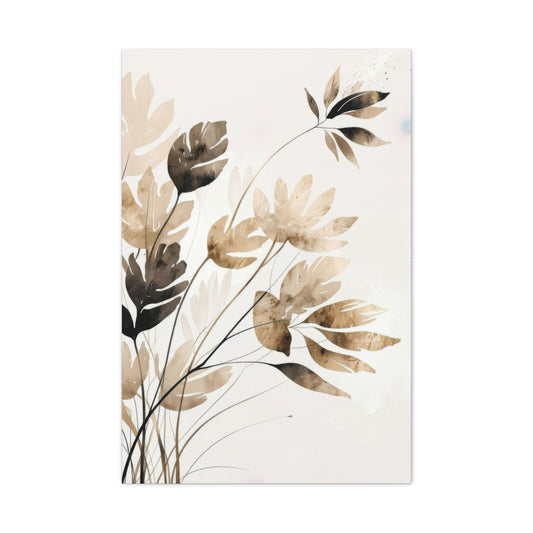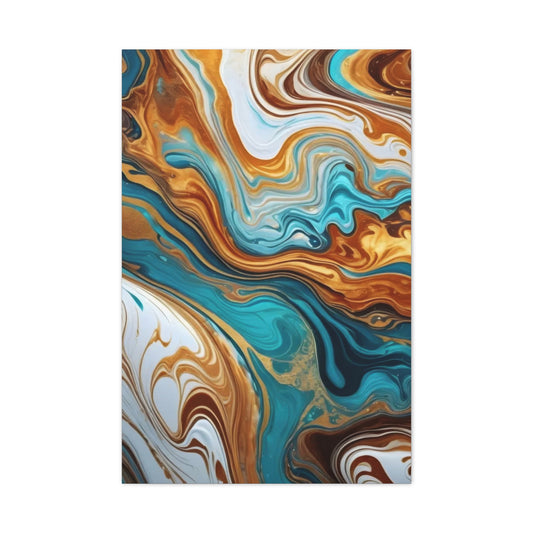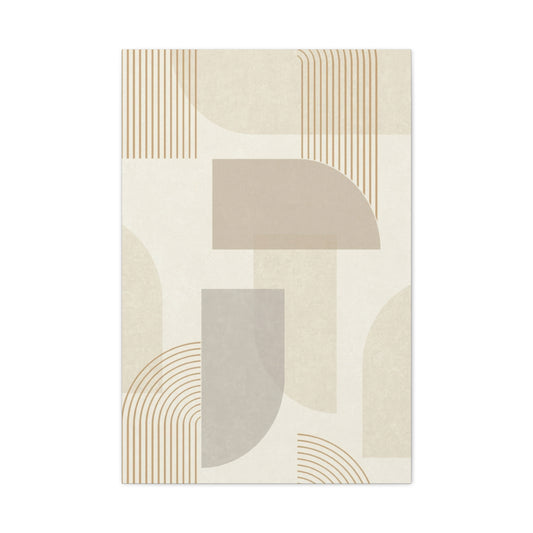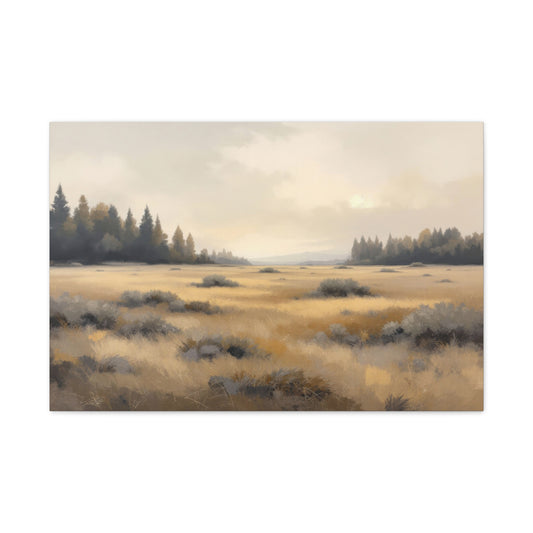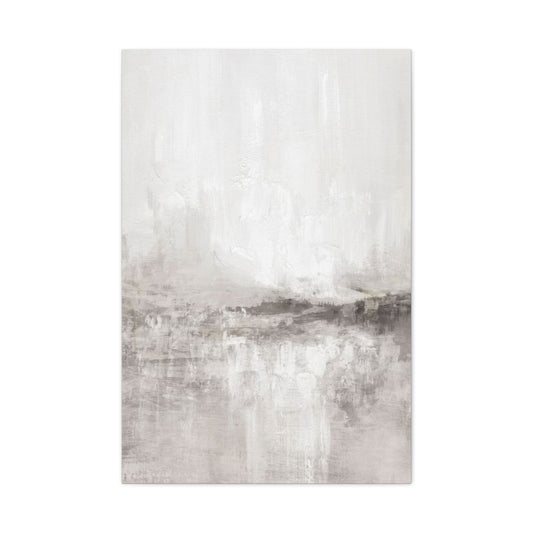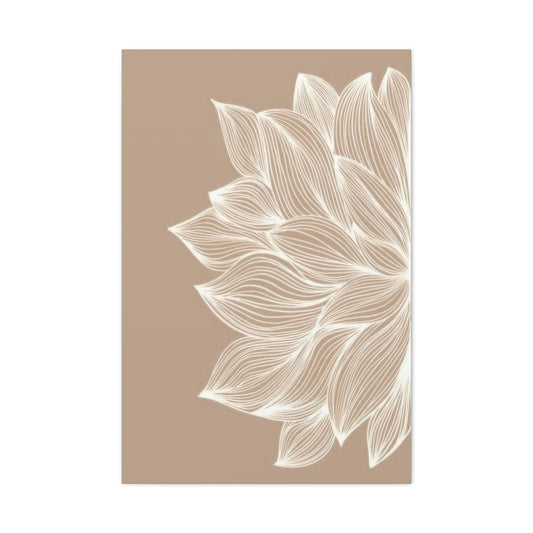Nail photography, often nestled within the realms of beauty photography and lifestyle content creation, plays a critical role in modern digital aesthetics. Whether you're showcasing manicure designs for a brand, crafting content for social media, or building a beauty portfolio, understanding the nuances of photographing nails can make all the difference between a flat, forgettable image and a scroll-stopping masterpiece.
Despite its small scale, nail photography is deceptively challenging. You’re working with tiny canvases, intricate designs, and expressive hand gestures, all of which must come together in a harmonious visual. These eight detailed tips will help you master the art of nail photography with professional polish and creative flair.
1. Prepare Hands and Nails to Look Flawless on Camera
Nail photography may center around nail polish and intricate designs, but it's the hands themselves that often determine the overall appeal of your final image. Preparing the hands is not just a minor pre-shoot task—it is a critical step that forms the foundation for any high-quality manicure photo. Whether you're shooting for a nail salon, beauty influencer campaign, or your personal branding portfolio, meticulous hand prep ensures that every detail in the frame looks polished, intentional, and camera-ready.
From skin texture to nail edges, every element captured in close-up beauty photography is magnified. That’s why attention to small imperfections—such as flaky cuticles, uneven nail shapes, or dull skin—can make or break the professionalism of your photo. Here’s how to elevate your pre-shoot preparation for hands and nails to the same standard as your photography gear and lighting setup.
Begin With a Clean Canvas: Wash and Hydrate
Start your nail shoot prep by cleansing the hands thoroughly. Use a mild soap that doesn’t leave behind residue, and gently exfoliate using a sugar scrub or a soft nail brush. This helps to remove dead skin cells and improve circulation, giving the hands a subtle natural glow before even applying moisturizer.
Hydration is the next crucial step. Massage in a rich hand cream—preferably one that absorbs quickly and doesn’t leave a greasy finish. Products containing ingredients like glycerin, shea butter, or hyaluronic acid work well to plump the skin and create a smooth base without shine that can interfere with lighting. For extremely dry areas, a dab of heavier balm or petroleum jelly on the knuckles and cuticles will soften them quickly.
For a refined skin texture, give the moisturizer a few minutes to absorb fully before proceeding to nail care or shooting. If you're working with a model, offer them a few minutes to relax their hands between moisturizing and positioning. Tense hands can look rigid and unnatural in photos.
|
Related Catagories: |
Pamper the Cuticles and Shape the Nails
Cuticles often go unnoticed in daily life, but they stand out under a macro lens. Dry or ragged cuticles can look distracting—even messy—in high-resolution nail images. Start by applying cuticle softener or oil and gently push back the cuticles with a wooden stick or soft pusher tool. Avoid cutting unless absolutely necessary, and always sanitize your tools.
Next, shape the nails using a fine-grit nail file. Whether you prefer square, almond, or oval shapes, consistency across all fingers is key. Uneven nail lengths or asymmetrical tips can quickly detract from a clean, professional image.
Don’t forget to buff the nail surface lightly to remove ridges and improve shine. For shoots that showcase natural nails or sheer polish, this step makes an enormous difference. If the nails will be painted, buffing helps polish adhere more evenly and reduces the appearance of bumps or textural inconsistencies.
Apply Fresh Polish or Touch Up Imperfections
If nail polish is part of your composition—and in most cases, it will be—ensure the color is applied with precision. Use a fresh coat of polish if possible. Touch up chipped areas carefully, and always clean up the edges of the nail bed using a thin brush dipped in nail polish remover.
For photo sessions focused on showcasing nail art, spend time inspecting each nail for smudges, bubbles, or accidental brush strokes. These flaws become glaring under close inspection, and although they can be edited out later, it's far more efficient to perfect the manicure before the shoot begins.
If you’re using gel polish or acrylic overlays, give them time to fully cure before the model interacts with props or poses. This avoids accidental dents, scratches, or residue that can affect the final image.
Choose Appropriate Finishes and Nail Designs for Photography
Some nail polishes are more photogenic than others. While glossy finishes reflect light beautifully and can create a polished effect, they can also catch glare under harsh lighting. Matte finishes provide a soft, velvety appearance that photographs elegantly, but they may emphasize dryness on the surrounding skin if the hands aren’t prepped properly.
When choosing designs, keep in mind that simple patterns or color gradients often translate better in photos than overly intricate nail art that’s hard to decipher at a distance. Opt for high-contrast designs if you want the nail details to stand out, especially when shooting on a neutral or monochromatic background.
Ensure that any embellishments—such as rhinestones, decals, or chrome powders—are clean, well-positioned, and securely applied. Loose or crooked elements can ruin the symmetry and precision of your nail images.
Keep Accessories Minimal and Intentional
While jewelry and rings can complement a hand shot by adding context or elegance, they must be used with discretion. The primary focus of a nail photograph should remain on the nails. Bold or oversized accessories can pull visual weight away from the polish or design and introduce unwanted reflections or distractions.
If the jewelry is part of a branding aesthetic or conceptual theme, ensure that it matches the tone and color scheme of the manicure. For minimalist shoots or close-up nail photography, it’s often best to avoid accessories altogether unless they’re stylistically enhancing the composition.
Additional Grooming Touches for the Camera
Don’t overlook the small, often forgotten details that can significantly influence how hands appear in photos:
-
Trim or shave visible hair on the fingers and hands if necessary, especially for ultra-close shots.
-
Avoid high-shine lotions or oils just before shooting, unless you're going for a dewy or editorial look. Matte or natural finishes generally appear cleaner.
-
Check for lint or dust on the hands or nails, especially if using textured props or fabrics during the shoot.
-
Use blotting paper or a makeup sponge to dab any extra shine on the skin before clicking the shutter.
Every small effort in grooming makes post-production editing smoother and results more polished.
Practice Relaxed and Natural Posing
Once the hands and nails are prepped, it’s time to focus on posing with elegance and fluidity. Tension in the fingers shows easily on camera. Encourage the model to stretch their fingers and relax their wrists to avoid stiffness. Hands should appear soft, slightly curved, and gently articulated.
Avoid flat placement or claw-like positioning. Let the fingertips curve naturally or gently interact with props to create flow. If photographing your own hands, use a timer or remote shutter to allow time to adjust the position without rushing.
2. Select the Ideal Camera and Lens Setup for Crisp Detail
In nail photography, the clarity of fine details—glitter textures, brushstrokes, micro-designs—is what elevates an image from amateur to professional. While smartphones have certainly come a long way in terms of convenience and computational photography, they still fall short when it comes to achieving the depth, sharpness, and precision that dedicated camera equipment offers. For photographers serious about capturing nail art in high fidelity, understanding the right camera and lens configuration is essential.
Whether you're photographing natural nails, intricate gel designs, or promotional nail art sets, using the correct gear gives you complete control over exposure, composition, and focal depth. It also allows for higher-quality edits in post-production, with RAW file flexibility and cleaner results across all lighting conditions.
Why a DSLR or Mirrorless Camera is Worth the Investment
For anyone planning to shoot nails professionally—or even semi-professionally—a DSLR (Digital Single-Lens Reflex) or mirrorless camera provides a level of image quality and flexibility that smartphone sensors simply can't replicate.
Models such as the Canon EOS Rebel T5i and Nikon D3400 are excellent entry points for creators on a budget. Despite being considered entry-level, these cameras feature APS-C sensors that offer far better low-light performance, resolution, and tonal range than any smartphone. The ability to shoot in manual mode, fine-tune white balance, and change lenses opens up a world of creative options.
Mirrorless alternatives like the Sony Alpha a6100 or Canon EOS M50 bring the added advantage of lightweight bodies and real-time exposure previews on electronic viewfinders. They’re perfect for nail techs or beauty bloggers who want to shoot and upload with minimal delay.
Choosing the Right Lens: Prime Lenses for Maximum Sharpness
While the camera body plays a supporting role in resolution and dynamic range, it’s the lens that truly dictates image sharpness and optical character. For nail photography, the goal is to achieve detail-rich, high-contrast close-ups with beautiful background separation.
A prime lens (a lens with a fixed focal length) is ideal for this task. These lenses often have wider maximum apertures, allowing you to shoot in lower light while creating a shallow depth of field that isolates the subject. Two of the most versatile and widely recommended focal lengths for nail work include:
-
50mm f/1.8 or f/1.4 – A “nifty fifty” is a great general-purpose lens that provides sharpness and subject separation while being budget-friendly. On a crop-sensor camera like the Rebel T5i, it behaves like an 80mm lens—perfect for tighter compositions.
-
85mm f/1.8 or f/1.4 – Often used in portraiture, the 85mm focal length offers superior compression and minimizes distortion, which makes fingers and nails look more proportionate. The extra working distance also makes it easier to light your subject from the front without casting shadows.
If you want even more detail, consider a dedicated macro lens like the Canon EF 100mm f/2.8 Macro or the Nikon AF-S 105mm Micro. Macro lenses are designed for extreme close-ups, and they can capture the finest textures in nail polish or tiny embellishments like crystals and foil with razor-sharp precision.
Understanding Aperture and Depth of Field in Nail Photography
The aperture setting you choose affects both exposure and the visual feel of your images. Shooting wide open at f/1.8 or f/2.0 can create beautifully soft backgrounds—perfect for lifestyle-inspired nail photography where you want to keep the viewer’s attention strictly on the nails.
However, extremely shallow depth of field can also be a double-edged sword. At f/1.2 or f/1.4, only a sliver of the hand or one nail might remain in sharp focus, while the rest blurs into obscurity. For commercial shots where you want the entire manicure to be crisp and legible, consider stopping down to f/4 or f/5.6 for increased depth and detail retention.
Mastering aperture settings helps strike the perfect balance between artistic blur and clinical clarity—a skill essential for showcasing nail polish finishes, from matte textures to high-gloss sheens.
Essential Support Gear: Tripod and Remote Shutter Release
Even with steady hands, camera shake is inevitable during handheld shooting—especially when you’re working with slow shutter speeds or tight compositions. A reliable tripod is a non-negotiable tool in any nail photographer’s kit.
A lightweight aluminum or carbon fiber tripod offers the flexibility to shoot at multiple angles while keeping your camera perfectly still. Many modern tripods come with ball heads for easier positioning and quick adjustments. For table-top shooting, a mini tripod can be ideal, especially when working in smaller studio spaces.
Pair your tripod with a remote shutter release—either wired or wireless. This small device allows you to trigger your camera without physically pressing the button, reducing the risk of movement that could cause blur. It’s particularly helpful when photographing your own hands, letting you maintain the pose and framing without having to reset between each shot.
3. Use Natural Light for Softness and Authenticity in Nail Photography
In the realm of beauty and nail photography, lighting isn’t just a technical necessity—it’s a storytelling element. The way light wraps around fingers, reflects off glossy topcoats, or highlights subtle nail art details can completely transform the visual impact of an image. While artificial lighting like LED panels, ring lights, and softboxes certainly have their place in a controlled environment, natural light remains one of the most powerful and accessible tools for creating authentic, soft, and beautifully rendered nail images.
Harnessing the nuances of daylight effectively will elevate your shots from flat to radiant. Let’s explore how to work with natural light, how to avoid common pitfalls, and how to maximize this free resource to its full potential.
Why Natural Light Works So Well for Nail Photography
The primary appeal of natural light lies in its soft gradation and even distribution. Unlike artificial light sources, which can often produce harsh hotspots or create unnatural shadows, natural light—especially when diffused—mimics the human eye’s perception of depth and texture. This is especially important in nail photography, where capturing realistic skin tones and accurate nail color representation is crucial.
When used correctly, daylight renders polish finishes with subtlety and precision. Whether the nails are finished with a high-gloss topcoat, a matte layer, or intricate 3D embellishments, natural light preserves texture without overwhelming it.
Ideal Times to Shoot Using Natural Light
The quality of natural light changes throughout the day. To achieve optimal lighting for hand and nail photos, avoid shooting under direct midday sun, which is typically too strong and casts hard shadows that may accentuate skin imperfections or distort the shape of the hand.
Instead, schedule your shoot during the “golden hours”—early morning shortly after sunrise or late afternoon before sunset. These windows offer soft, directional light with warm tones that flatter the skin and add depth to your shots without the need for diffusion equipment.
If you're shooting indoors, choose a north-facing window (in the Northern Hemisphere) for consistent, gentle lighting throughout the day. South-facing windows can also work well in winter months when sunlight is weaker.
Positioning for Maximum Impact
Placement relative to the window makes a significant difference. For natural nail photography setups indoors, position your hand or subject at a 45-degree angle to the light source. This angle produces a mix of highlight and shadow that enhances dimension while maintaining softness.
You can also experiment with backlighting, where the window light comes from behind the subject, creating a glowing halo effect. While more challenging to expose correctly, backlit shots can be ethereal and dreamy when used for creative editorial-style nail images.
For overhead lighting effects without direct sun, positioning the subject directly beneath a skylight or large window can simulate a softbox, bathing the hands in even, vertical light that’s ideal for symmetrical compositions.
Use Diffusers and Reflectors to Sculpt Light
Even natural light may need shaping to achieve the best results. When sunlight is too strong or uneven, use a white sheer curtain, tracing paper, or a commercial diffuser to scatter and soften the light. This reduces glare on shiny surfaces like gel polish or nail jewels and prevents overexposed highlights on the skin.
To fill in shadows, especially on the side opposite your window, introduce a reflector. A simple white foam board, a silver reflector disc, or even a sheet of white paper can bounce light back onto the hand, lifting shadows and revealing details in underlit areas. You can also use gold reflectors for a warm tone, though be cautious—they can sometimes alter nail color slightly in post-processing.
Avoid On-Camera Flash for Nail Photography
One of the most common mistakes in close-up nail photography is the use of on-camera flash. Although it might seem like a quick fix for low light conditions, built-in flash units create flat, hard light that strips depth and adds unattractive specular highlights to the nails and skin.
Flash lighting often results in color distortion, especially on skin tones, and can create awkward hotspots on glossy polish that resemble smudges or fingerprint marks. It also tends to cast harsh, unnatural shadows around the fingers and nails—something difficult to correct in post-production.
If you must use artificial light to supplement daylight, choose continuous soft lighting sources placed off-camera, and always diffuse them for a natural appearance.
Adjust Camera Settings for Low-Light Natural Environments
When natural light is present but not abundant—like on overcast days or in shaded interiors—adjust your camera settings instead of turning to harsh lighting fixes.
-
Increase ISO: Raising your ISO to 400 or even 800 can help maintain a bright exposure without needing additional light sources. Modern DSLRs and mirrorless cameras handle mid-range ISO values with minimal noise, especially in RAW format.
-
Slow Your Shutter Speed: If using a tripod, you can afford a slower shutter speed (e.g., 1/60s or lower) to let in more light without introducing camera shake.
-
Widen Aperture: Open your lens to f/2.8 or lower to allow more light into the sensor and create a beautiful, softly blurred background.
-
Use Manual Focus: In lower light, autofocus may struggle. Switching to manual focus ensures the sharpest results, especially for macro-style close-ups of intricate nail work.
Always review your histogram and preview your shots during the session to prevent unintended underexposure or clipping in highlights.
|
Related Catagories: |
Natural Light and Color Accuracy
One often-overlooked benefit of natural lighting is true-to-life color rendering. For beauty and nail content, color accuracy is paramount—especially when showcasing new polish shades or professional nail art that needs to reflect the artist’s intent.
Natural daylight, particularly in open shade or diffused environments, offers a balanced color temperature close to 5500K, which helps maintain accurate skin tones and nail hues without complex color correction in post. Artificial lights can often skew toward the yellow or blue spectrum unless carefully color-matched and balanced with gels or filters.
4. Introduce Props to Enhance Composition and Pose Naturally
When it comes to nail photography, achieving natural, elegant hand poses can be surprisingly challenging. Tension in the fingers, stiff wrists, and awkward angles can instantly detract from an otherwise beautiful manicure. That's where props come in—not just as visual embellishments, but as essential tools that enhance composition, relax the hand, and establish context within the frame.
Incorporating carefully chosen props in your nail photography can bring fluidity and purpose to your subject’s hand placement. Beyond just adding visual interest, they create a narrative and lend personality to the image. Whether your goal is to evoke luxury, warmth, minimalism, or editorial drama, the right props will help tell a more compelling story through your photo.
Why Props Matter in Nail Photography
In the highly detailed world of beauty photography, hands are more than just background elements—they're the frame for your canvas. But posing them naturally is a skill that often goes overlooked. Unassisted hands tend to look stiff and claw-like, particularly when the subject isn’t a trained model. This rigidity can make the nails feel disconnected from the rest of the image.
Introducing a prop changes everything. It gives the hand a job to do, loosening the fingers into more relaxed, believable positions. The hand no longer exists in isolation—it interacts with an object, creating a sense of movement, intention, and realism. The visual result feels more organic, making the entire composition more inviting and emotionally resonant.
Choosing the Right Prop for Your Concept
When selecting props for your nail shoot, it's important to match them to your overall theme and aesthetic. A well-chosen object should feel like a natural part of the scene—something that could realistically belong in that setting or in the lifestyle being portrayed.
Here are some categories of props to consider:
-
Beauty Items: Compact mirrors, lipstick tubes, skincare jars, nail polish bottles.
-
Lifestyle Objects: Coffee cups, books, reading glasses, candles, journals.
-
Natural Elements: Flower petals, leaves, seashells, feathers, stones.
-
Textiles: Silk scarves, cozy knits, linen tablecloths, lace fabric.
-
Personal Accessories: Jewelry boxes, minimalist rings, hairpins, watches.
These items not only make the photo more visually appealing but also create subtle cues about the subject’s personality, environment, or mood. For example, a soft knit sweater and a cup of tea suggest calmness and comfort—perfect for promoting soft neutral nails or cozy winter-themed manicures.
Complementing the Nail Design with Color and Texture
One of the most critical considerations when working with props is color harmony. Your prop should never outshine or visually clash with the nail art. Instead, think in terms of complementary tones, analogous hues, or neutral shades that will highlight—rather than compete with—the manicure.
If you're photographing pastel nails, choose soft and subtle props in muted tones. If you're working with jewel-toned or metallic polish, consider props with luxurious textures like velvet, brass, or satin to enhance the richness of the color.
Textures also play a huge role. A smooth ceramic mug can contrast beautifully with glitter or textured polish. A floral arrangement might mirror the pattern or color of a painted nail, reinforcing the design visually without overwhelming it.
Make sure to balance visual weight. If the prop is too large or intricate, it can steal the viewer’s attention. If it’s too small or subtle, it may serve no functional purpose. The prop should feel intentional—not just tossed into the scene.
Ideas for Posing Hands with Props
Props do more than provide context—they help guide hand gestures. Use them to encourage natural articulation of the fingers and wrist, which in turn helps showcase the nails from flattering angles.
Here are a few pose ideas involving props:
-
Holding a delicate flower stem between the fingers to elongate the hand and show nail shape.
-
Cupping a ceramic mug with both hands to emphasize symmetry and polish details on multiple nails.
-
Lightly grasping a lipstick or mascara tube, showcasing a thumb or index finger while keeping the hand relaxed.
-
Resting fingertips on a book or mirror to add reflective interest while keeping the nails in focus.
-
Lifting a sheer curtain or piece of lace, allowing light to filter in while creating a sense of movement.
Don't be afraid to rotate the wrist or adjust angles multiple times. Minor changes in prop placement can drastically affect the composition and the natural appearance of the hand.
Background Integration and Layered Storytelling
Props don't exist in isolation—they should integrate seamlessly into the overall setting of your photograph. Consider how your props interact with the background elements to create layers of interest.
For example:
-
A hand holding a gemstone placed against a velvet-lined box suggests a theme of elegance and femininity.
-
Fingers touching a book beside reading glasses on a wooden table create a lifestyle vibe rich in narrative.
-
A hand reaching into a makeup bag, surrounded by other beauty products, evokes routine and ritual.
These background inclusions can add depth and meaning to your composition. Layered storytelling in nail photography goes beyond showing just polish—it paints a mood, a lifestyle, or even an aspiration. It makes your viewer feel something.
Creating Depth Through Foreground and Framing
Props also allow you to play with foreground and framing techniques. Placing an object slightly in front of or behind the hand can give the image a more three-dimensional feel, drawing the viewer’s eye into the photograph.
For instance, positioning a branch or fabric edge in the foreground (slightly blurred due to a wide aperture) gives a voyeuristic quality to the image—as if the viewer is peeking into a moment. Meanwhile, using symmetrical props like a bowl of berries or an open book can help frame the hand and keep visual attention centered on the nails.
5. Master Aperture Settings for Balanced Depth and Sharpness
In nail photography, visual storytelling relies heavily on clarity, composition, and depth. Among the most critical camera settings that influence all three is the aperture—a fundamental aspect of exposure that controls how much of the image remains in focus. For photographers capturing intricate manicures or stylized nail art, understanding and mastering aperture settings is essential to ensure the subject is sharp while the background maintains a soft, complementary blur.
The right aperture choice not only showcases the complexity and detail of nail designs but also contributes to the overall mood and polish of the photograph. Whether you're aiming for a creamy, blurred background or uniform sharpness across multiple hands and props, this guide will help you navigate aperture control with precision and intent.
Understanding Aperture in Nail Photography
Aperture refers to the opening in the lens diaphragm that controls how much light enters the camera. It’s measured in f-stops—values like f/1.4, f/2.8, f/5.6, etc. A lower f-stop number means a wider aperture, which allows more light and results in a shallower depth of field. A higher f-stop number means a narrower aperture, allowing less light but increasing the amount of the image that appears sharp from foreground to background.
In the context of nail photography, where focus on fine details is paramount, the aperture becomes your tool for depth of field manipulation, helping you control how much of the hand, nails, and surrounding environment appear in crisp detail.
The Impact of Shallow Depth of Field
Using a wide aperture—typically between f/1.4 and f/2.0—can create a dreamy, ethereal look with just the nails in sharp focus and the background melting away into a smooth blur. This technique works well when the goal is to isolate the manicure, reduce distractions, and draw the viewer's eye directly to the nail design.
However, there's a caveat. If your subject's hand is not perfectly parallel to the camera sensor—or if you're working with a highly curved or dimensional nail set—parts of the hand may fall out of the focus plane. This could leave some fingers or nail edges looking soft, which may not be desirable if you're aiming to capture intricate details on each nail.
For this reason, while ultra-wide apertures create beautiful bokeh and depth, they should be used with care and only when selective focus is part of the visual concept.
Finding the Aperture Sweet Spot: f/2.8 to f/5.6
In most nail photography scenarios, the ideal aperture range lies between f/2.8 and f/5.6. This range offers a satisfying balance between shallow depth of field and extended sharpness. It ensures the nails remain sharply defined, even if the hand is tilted or gently curved, while still providing enough background blur to separate the subject from its surroundings.
At f/2.8, you retain a good amount of softness in the background while keeping enough detail across most of the nails. This setting is especially useful when photographing a single hand at an angle, or when working in low-light conditions and still wanting that soft-focus look.
At f/4 or f/5.6, you gain deeper field clarity—ideal for shots involving multiple fingers, flat-lay compositions, or when including props or textured backgrounds that you still want partially visible but not overpowering.
This mid-range aperture zone also performs exceptionally well when paired with natural light, making it perfect for indoor daylight shoots near a window.
Using Narrower Apertures for Multi-Hand Compositions
When you're photographing two hands or incorporating both hands and props in a layered setup, a narrower aperture like f/8 or f/11 may be necessary to maintain consistent focus across the entire subject. In these scenarios, there's more depth to the composition, and any hand or object positioned closer or further away from the lens can quickly fall out of focus with a shallow depth of field.
A narrower aperture ensures that the viewer sees the full manicure on both hands or the interaction between nails and surrounding elements clearly and cohesively. The trade-off is less background blur, but this can be mitigated with careful backdrop selection or post-processing techniques.
Keep in mind that as the aperture narrows, you'll need to compensate by adjusting your ISO or shutter speed—or increasing your available light—since less light will reach the sensor.
Aperture and Lens Choice: A Strategic Relationship
Your lens selection plays a significant role in how aperture affects your image. For nail photography, prime lenses such as the 50mm f/1.8, 85mm f/1.4, or dedicated macro lenses (e.g., 100mm f/2.8) are preferred for their sharp optics and wide aperture capabilities.
A macro lens offers the advantage of extreme close-up focusing, allowing for detailed captures of nail art texture, brushwork, and embellishments. These lenses also maintain consistent sharpness across the frame even at wide apertures, which is ideal when capturing a full hand or stylized nail sets.
Telephoto primes (like an 85mm lens) allow you to shoot from a distance and compress the background, enhancing the blurred effect and reducing distortion—great for maintaining natural finger proportions.
Artistic vs. Commercial: Aperture for Purpose
It’s important to choose your aperture based on the intent of the photo. Are you shooting a creative editorial image that focuses on mood and atmosphere? Or are you capturing nail art for a product showcase where every line and curve must be visible?
-
For artistic shots, go ahead and use f/1.8 or f/2 to highlight mood and emotion through selective focus. Let the blur envelop the background and guide the viewer’s eye with intention.
-
For catalog or portfolio work, stick with f/4 to f/8 for clarity and consistency. This ensures all elements—especially nail length, shape, and polish finish—are well-defined and color-accurate.
Balancing technical precision with creative expression is the hallmark of professional nail photography. Mastering your aperture settings lets you shift easily between the two.
Real-World Application and Testing
If you're unsure which aperture to use for a specific nail composition, try bracketing your aperture. Capture the same shot at f/2.8, f/4, f/5.6, and f/8, and review them side by side. Note how the focal plane shifts and how the mood of the image changes with each variation.
Also, examine the nail polish texture in each version. Some finishes, especially shimmer or iridescent types, appear more pronounced under certain apertures and lighting combinations. This can influence not just your depth of field but also the way light interacts with the polish.
6. Mind the Distance: Avoid Distortion with Proper Framing
One common mistake in nail photography is getting too close to the subject. This can cause parts of the hand—usually the fingers closest to the lens—to appear disproportionately large due to lens distortion.
Instead of moving your camera closer, step back and use the lens to zoom in or crop later during editing. This maintains the correct proportions and gives you more room to fine-tune the framing without warping your subject.
If you're photographing your own hand, place a small object or mark where your hand will be, then pre-focus the camera and use your remote shutter to capture the shot. This avoids the awkward back-and-forth that comes with blindly adjusting hand placement.
7. Select Backgrounds That Support, Not Distract
Your choice of background can subtly shift the entire tone of your image. Busy or colorful patterns can overwhelm the frame and distract from the nail design. Instead, opt for simple backdrops that provide contrast and allow your subject to breathe.
Monochromatic or muted backgrounds—like soft pink, ivory, charcoal, or pale blue—tend to work well. You can also select backgrounds based on color theory to complement the polish color. For instance, green nails might look striking against a warm beige backdrop, while nude tones pair beautifully with soft gray.
Flat-lay backdrops, marble textures, and fabric drapes can add a touch of luxury without cluttering the composition. Avoid harsh lines or shadows in your backgrounds unless they're intentionally part of the design.
8. Polish Your Photos with Gentle Post-Processing
Even the best shot can benefit from thoughtful editing. Post-processing allows you to fine-tune your nail photos and eliminate any minor flaws.
Use retouching tools like the patch tool or clone stamp to remove stray hairs, dust, or tiny imperfections. Avoid aggressive smoothing—while it’s tempting to blur dry skin, too much softening creates an unnatural, airbrushed effect.
The crop tool helps you reframe your image, clean up distractions on the edges, or align the composition better. Use it to draw tighter focus to the nails or center the hand if necessary.
Adjust curves to manage tonal contrast. This tool is especially helpful for correcting skin tones, deepening shadows, or boosting midtones for more vibrancy. You can also apply subtle color grading to enhance mood.
Use selective sharpening to highlight nail edges or textures like glitter or foil. Be gentle with global adjustments, especially with saturation and clarity, to preserve realism.
If the image includes ambient blur or was shot with a wide aperture, avoid adding artificial blur in post unless for a creative effect. Precision and subtlety go a long way in maintaining a natural, elegant finish.
Final Thoughts: Elevate Your Nail Photography with Practice and Precision
Nail photography merges art, technique, and styling into a compact but impactful visual form. From preparing hands to post-processing polish, each step plays a role in the final image’s success.
By using appropriate camera gear, understanding light behavior, experimenting with backgrounds and props, and learning to pose hands naturally, you can produce images that do more than just showcase polish—they tell a story, evoke a mood, or inspire trends.
And just like any genre of photography, mastery comes with practice. Take time to analyze your images, test new angles, explore color harmonies, and refine your workflow. The more deliberate your approach, the more powerful and professional your nail photos will become.











